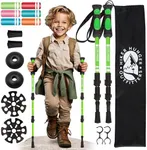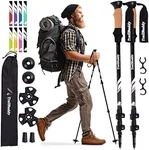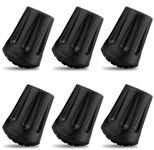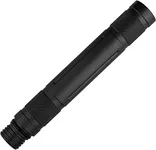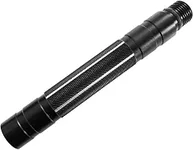We Use CookiesWe use cookies to enhance the security, performance,
functionality and for analytical and promotional activities. By continuing to browse this site you
are agreeing to our privacy policy
Best Rei Trekking Poles
From leading brands and best sellers available on the web.How do we rank products for you?
Our technology thoroughly searches through the online shopping world, reviewing hundreds of sites. We then process and analyze this information, updating in real-time to bring you the latest top-rated products. This way, you always get the best and most current options available.

Most Popular Categories Right Now
Buying Guide for the Best Rei Trekking Poles
Choosing the right trekking poles can significantly enhance your hiking experience by providing stability, reducing strain on your joints, and improving your balance on uneven terrain. When selecting trekking poles, it's important to consider various specifications to ensure they meet your specific needs and preferences. Here are the key specs to look at and how to navigate them.MaterialThe material of trekking poles affects their weight, durability, and cost. Common materials include aluminum and carbon fiber. Aluminum poles are generally more affordable and durable, making them a good choice for rugged terrain. Carbon fiber poles are lighter, which can reduce fatigue on long hikes, but they are typically more expensive and can be less durable in rocky conditions. Choose aluminum if you prioritize durability and cost, and carbon fiber if you prioritize weight and are willing to invest more.
AdjustabilityAdjustable trekking poles allow you to change the length to suit different terrains and personal preferences. This is important for maintaining proper posture and balance. Poles can be adjusted using lever locks or twist locks. Lever locks are generally easier to use and more reliable, especially in cold or wet conditions. Twist locks are lighter but can be less secure. If you hike on varied terrain or share poles with others, adjustable poles with lever locks are a good choice. Fixed-length poles are lighter and simpler but less versatile.
Grip MaterialThe grip material affects comfort and moisture management. Common materials include cork, foam, and rubber. Cork grips conform to your hand over time, provide excellent moisture management, and reduce vibration, making them ideal for long hikes. Foam grips are soft and absorb moisture well, suitable for warm weather. Rubber grips are durable and provide a firm hold, but can become slippery when wet. Choose cork for long hikes, foam for warm weather, and rubber for durability and wet conditions.
WeightThe weight of trekking poles can impact your overall energy expenditure on long hikes. Lighter poles reduce fatigue but may sacrifice some durability. Heavier poles are more durable and stable but can be tiring over long distances. If you plan on long-distance hiking or backpacking, opt for lighter poles. For shorter hikes or rugged terrain, heavier poles may be more suitable.
Shock AbsorptionSome trekking poles come with built-in shock absorbers to reduce impact on your joints, which is especially beneficial on downhill sections. This feature can add weight and cost to the poles. If you have joint issues or plan to hike on very rocky or steep terrain, shock-absorbing poles can provide extra comfort. If you prefer lighter poles and don't have joint concerns, you might skip this feature.
PackabilityPackability refers to how compact the poles can be when not in use. This is important if you need to stow them in a backpack or suitcase. Folding poles are the most compact and are great for travel, but they can be less durable. Telescoping poles are less compact but generally more durable and easier to adjust. If you travel frequently or need to pack your poles often, folding poles are a good choice. For general hiking, telescoping poles offer a good balance of durability and convenience.
